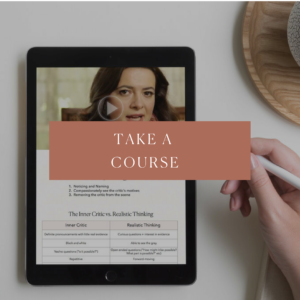I’ve watched hundreds of brilliant women and men not do what they are meant to do in this world — not share their voices, not ask for what they deserve, not take the risks involved in creating their knock-the-ball-out-of-the-park life — because of fear.
We all need fear-slayers, tools that help us quiet and overcome our fears. Here are five of my favorites:
1. Create a character. Create a character that symbolizes the voice of fear within you. Maybe she’s a frail recluse or an eight-year-old bully or a fire-breathing dragon. Maybe it’s the lion from “The Wizard of Oz” or the Wicked Witch or the Wizard himself. Pick a character that illustrates how the voice of fear feels in you, and name your character. When you hear the voice of fear, greet it: “Oh, Cruella, I see you’ve come to visit. Hello.”
Why does this work? Creating a character helps you separate the real you from the part of you that’s afraid. Your fears come from that instinctual part of the brain that seeks to avoid risk at any cost–not from your core self, your inner wisdom, or your dreams. Naming the voice of fear, visualizing it as a character and observing it helps you get back in charge.
2. Follow the fear through to the end game. Fear holds us hostage, making threats that if you do X, a disastrous outcome will occur. The remedy is to imagine how you’d handle that outcome, and evaluate just how bad it would really be.
This involves asking “so what?” again and again. If, for example, you’re afraid that your request for a raise will be turned down, ask yourself, “So if I was turned down, so what? Then what?”
You’ll probably hear yourself thinking something like, “Well, I’d be disappointed, and I’d think about whether that means I need to change jobs. I guess it wouldn’t be the end of the world.” You’ve just taken a great deal of power away from your fear.
Or, you might find this outcome still feels super scary, and your answer to the question is “I’d feel horribly embarrassed around my boss every time I saw her!” Then ask the question again: “So I’d feel embarrassed and awkward, then what?” Keep following the fear through to the endgame. You’ll find your resiliency and sense of perspective as you keep asking, “So what?”
3. Ask, “Is it true?” Whatever the little voice of fear is saying, it’s probably not true. The fearful part of us is irrational and overprotective. It might be saying you are likely to fall flat on your face if you take a risk, or that no one will like your ideas. It might be saying that moving to a new city could ruin your children, or choosing the wrong job could wreck havoc on your life. When you hear fear-based thoughts, ask yourself, “Is what this voice is saying true?” or, in Byron Katie’s approach, “Can I be absolutely sure that this thought is true?” The answer to these questions — especially the latter one — is most often “no.”
4. Connect to love. Here’s the very cool thing about our human consciousness. We can’t be in a state of fear and one of love at the same time. They can’t coexist. Each one blots out the other. When we are really connected to that mysterious energy that is love, we connect to a softness, a safety, a comfort, a healing. Fear vanishes.
So when you are stuck in fear, reconnect to love. Listening to a favorite song, doing something you love, focusing on a picture of a loved one, or connecting with nature are all good ways to do this. Many people find that a short meditation on their own breathing or reaching out to a higher power in prayer reconnects them to love. Giving — time, money, a gift or a heartfelt compliment — to another person also connects us to love.
Use whatever process works for you. You’ll know you’ve reconnected to love when you feel that sense of harmony and comfort and softness returning.
If you aren’t sure what helps you easily and swiftly reconnect to love, start experimenting. All of us need a set of strategies for connecting to love when we get fearful, anxious, resentful or off balance.
5. Let fear be your traveling companion. Much of the time we can soften or even entirely lift our fears using the tools above, but sometimes, fear persists. Then it’s time for this tool: let fear be your traveling companion. Let it be there, but not in control. Let it be there, but don’t take direction from it or stop moving forward because of it.
This is a skill. It’s a skill to learn to act in the face of fear, to allow it to be present but not to interfere.
You know when you are driving on the highway, and right next to you, one lane over, there’s some guy hanging out the window, keeping pace along side of you? He’s not in your way but he’s in your field of vision?
Think of fear that way: as the guy in the lane next to you. You are in the driver’s seat, in your own lane, moving forward. He’s next to you, not blocking you but just there, somewhat irritating, palpably present. The ride would feel more enjoyable and free if he wasn’t there, but you are getting to your destination just fine anyway.
Learn to walk with fear this way — as if it’s your uninvited traveling companion — intrusive, but not in the way.
Love,
Tara
photo credit: Ryan Johns







